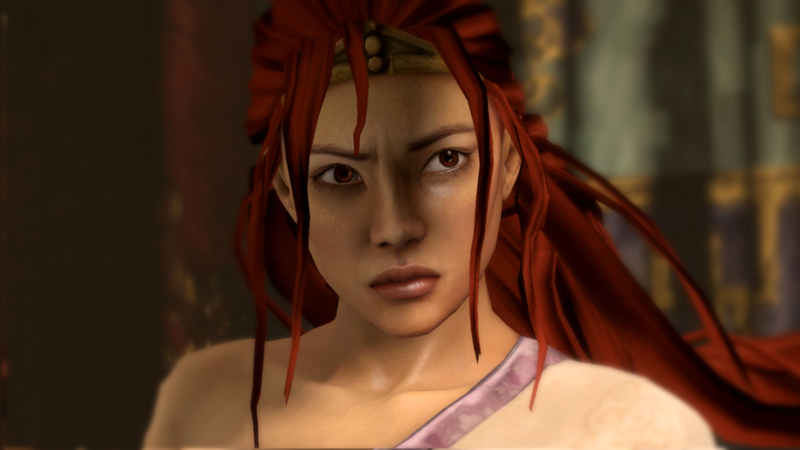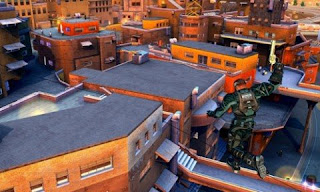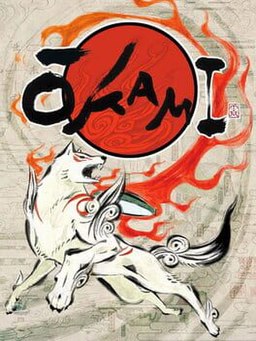
Playstation 3 only
Released September 2007
Lets get this out of the way right now: the star of this game is not the crimson-haired Nariko. She may be the main character, but the real star of this game is her surrogate sister Kai. She is the soul of this game, and without her, the game would have just been a generic brawler. She is the single most expressive character in video game history, her performance is so nuanced and brilliant, and I dare anyone not to fall in love with her during the first 30 minutes of the game. The fact that her acting performance is entirely rendered in the game engine is astounding. She made me laugh out loud on several occasions, and in one particular sequence, helped fuel my rage towards a boss character during an important fight. Twing, mother 'effing Twang.

Now lets talk about the game itself.
Heavenly Sword is essentially an action brawler similar to games like Ninja Gaiden, God of War, or Devil May Cry. You play as Nariko (m
 ost of the time) and use sharp objects to slice your way through 5 chapters spread out over the last 5 days of Nariko's life. As in God of War, Nariko dies in the opening, so I'm not spoiling anything by mentioning it. There are some aspects of other action games noticeably absent, however. The most glaring being the lack of a jump button, and the absence of puzzles. This game is action through and through. There are well-placed moments of quiet to break up the action, but there are very few places in which you are actually required to think. This was somewhat jarring at first, and disappointing. However, once I got a handle on the combat mechanics, I began to appreciate the overall gameplay.
ost of the time) and use sharp objects to slice your way through 5 chapters spread out over the last 5 days of Nariko's life. As in God of War, Nariko dies in the opening, so I'm not spoiling anything by mentioning it. There are some aspects of other action games noticeably absent, however. The most glaring being the lack of a jump button, and the absence of puzzles. This game is action through and through. There are well-placed moments of quiet to break up the action, but there are very few places in which you are actually required to think. This was somewhat jarring at first, and disappointing. However, once I got a handle on the combat mechanics, I began to appreciate the overall gameplay.When it comes to Nariko and the heavenly sword, you have 2 standard attack buttons, 3 stances, a special move button, an action button, and a quick evasion move mapped to the right analog stick. Enemy attacks come at you in a rock/paper/scissors format. If an attacking enemy has a blue aura, they can be blocked and countered in the default "speed stance." If their aura is orange, it can be countered in "power stance" by holding the R1 button. The third stance is "range stance" and is mapped to the L1 button. These 3 stances have their own
 combos to unlock and learn, their own counterattack moves, and their own special moves activated by the circle button. Switching between stances is fast, efficient, and can be done during combos to make things even more interesting. Counterattacks, if timed properly, lead to instant-kills. As you rack up successive hits, you build up your special meter, which allows you to perform instant-kill moves. As the game progresses, you unlock longer combos for each stance, and up to a 3 level special meter, which if fully charged can kill anyone within 20 feet of Nariko. All of these different elements blend together beautifully in combat, and honestly feel like an elaborate dance.
combos to unlock and learn, their own counterattack moves, and their own special moves activated by the circle button. Switching between stances is fast, efficient, and can be done during combos to make things even more interesting. Counterattacks, if timed properly, lead to instant-kills. As you rack up successive hits, you build up your special meter, which allows you to perform instant-kill moves. As the game progresses, you unlock longer combos for each stance, and up to a 3 level special meter, which if fully charged can kill anyone within 20 feet of Nariko. All of these different elements blend together beautifully in combat, and honestly feel like an elaborate dance.The short time spent with Kai is completely different. Kai is much far more fragile than Nariko and uses a massive crossbow to take out enemies. Her controls were a bit frustrating at first until I learned how to effectively use "after-touch." After-touch allows any flying object in the game to be guided through the air in slow motion towards it's target.
 This is usually done via motion-controls, however I found it easier just to switch to analog control. Once I understood how it worked, I used after-touch on everything. It brings a great deal of satisfaction guiding an arrow into an approaching enemies neck in slow motion.
This is usually done via motion-controls, however I found it easier just to switch to analog control. Once I understood how it worked, I used after-touch on everything. It brings a great deal of satisfaction guiding an arrow into an approaching enemies neck in slow motion.While playing as Kai or Nariko, the game is peppered with quick-time-events similar to those found in Resident Evil 4, God of War, or Shenmue. This seemed almost an afterthought, but is a rather simple addition to the game that simply helps to involve the player in cut-scenes.
Overall, in the gameplay category, I do wish there was a bit more meat to the game. I have to say I was very surprised at how satisfying and varied the combat is throughout the game, though it's best not to come in expecting much beyond the fighting. If I had to rate the game based on the gameplay alone, I would have to recommend passing on Heavenly Sword. However, that would be unfair to the game, and it's developers.
This is, hands down, the best looking game I have ever played. That's a bold claim that I've made before, and it seems each time I say it, another game comes along and one-ups the last. I still stand by it, however. There has simply never been a game before that has had characters this
 realistically animated. Performances are sometimes subtle and nuanced (in the case of Kai) or over-the-top brilliant (Andy Serkis plays the eccentric villain Bohan). With truly believable performances by the cast, I found myself more emotionally invested in the characters than I expected in such a short time-span. The story itself seems to be missing just a few parts, and sort of thrusts you into the narrative without much history. Why is Nariko cursed even before she uses the Heavenly Sword? What does Bohan even want with the sword? He seems to run the whole known world anyway. I understand why he wants to destroy Nariko's clan, but the Sword itself just seems like a trophy to him. Despite these missing pieces, I still found myself eager to see each chapter play out.
realistically animated. Performances are sometimes subtle and nuanced (in the case of Kai) or over-the-top brilliant (Andy Serkis plays the eccentric villain Bohan). With truly believable performances by the cast, I found myself more emotionally invested in the characters than I expected in such a short time-span. The story itself seems to be missing just a few parts, and sort of thrusts you into the narrative without much history. Why is Nariko cursed even before she uses the Heavenly Sword? What does Bohan even want with the sword? He seems to run the whole known world anyway. I understand why he wants to destroy Nariko's clan, but the Sword itself just seems like a trophy to him. Despite these missing pieces, I still found myself eager to see each chapter play out.Which brings me to the last problem I have with the game: its length. Heavenly Sword can be completed in one sitting. In fact, I would have done just that if I hadn't stopped to watch Heroes for an hour. As I mentioned, it's only 5 chapters spread over 5 days. It's soli
 dly directed and consistent all the way to the end, with a very satisfying finale that manages to be somewhat touching. But the entire thing is 5 hours long. I'm sure you could drag that out a bit by playing through again to unlock more bonus artwork, but the game lacks enough content for me to justify spending $60 on it. I guess if it came with a free cake, or 5 bonus chapters featuring Kai, or a replica of Master Chief's helmet, then it would be a steal at that price. In it's current state, it's worth renting. It's a game PS3 owners will want to own to pull out every now and then to showboat the power of their system, but it's still not worth more than $40. I wish I didn't have to say that, since it's obvious large amounts of money were spent in the development, casting, and motion-capturing. I hope they are able to make a profit, because I'd love to see a sequel or spin-off someday.
dly directed and consistent all the way to the end, with a very satisfying finale that manages to be somewhat touching. But the entire thing is 5 hours long. I'm sure you could drag that out a bit by playing through again to unlock more bonus artwork, but the game lacks enough content for me to justify spending $60 on it. I guess if it came with a free cake, or 5 bonus chapters featuring Kai, or a replica of Master Chief's helmet, then it would be a steal at that price. In it's current state, it's worth renting. It's a game PS3 owners will want to own to pull out every now and then to showboat the power of their system, but it's still not worth more than $40. I wish I didn't have to say that, since it's obvious large amounts of money were spent in the development, casting, and motion-capturing. I hope they are able to make a profit, because I'd love to see a sequel or spin-off someday.I would usually put the trailer up, or a video showing gameplay, but instead I give you 2 videos showing off the games most valuable component. Ladies and Gents, I present my dear friend Kai:
Personal Score: If price is not a factor, this is a must buy. If $60 is too much to spend on 5 -7 hours of gaming, then just rent it.

































